The iPhone 13 Pro Max offers a buttery smooth refresh rate, multi-day battery life and great camera performance, but is it the perfect iPhone for you?
Should I Buy The Apple iPhone 13 Pro Max?
Pros
- Great low-light photography performance
- Ultra-smooth 120Hz refresh rate
- Incredible battery life
- A15 Bionic is unbeaten
Cons
- Big and bulky
- Relatively slow charging
- Cinematic mode is capped at 1080p
- Expensive
Our Verdict
Price When Reviewed
- $1,099 (128GB), $1,199 (256GB), $1,399 (512GB), $1,599 (1TB)
The iPhone 13 Pro Max is the culmination of Apple’s work over the past few years, offering the biggest, fastest display and best battery life of any iPhone to date. However, the iPhone 13 Pro Max is also the most expensive iPhone currently available, and unlike last year, there aren’t upgrades unique to this year’s Pro Max variant.
With that in mind, is it worth paying the extra for the bigger display and longer battery life, or should you save yourself a bit of money and go for the equally-capable iPhone 13 Pro? Keep reading to find out.
Design And Build
- Slightly thicker and heavier than its predecessor
- 20% smaller Face ID notch
- New colour finishes
The iPhone 13 Pro Max is the biggest in the iPhone 13 series, both in terms of display size and overall heft - even the move from an iPhone 12 Pro to the 13 Pro Max is noticeable. It’s something you adjust to fairly quickly, but I wasn’t expecting such a bulky experience when I first got my hands on the smartphone.
It is slightly thicker and heavier at 7.7mm and 240g respectively, likely down to the increase in battery power - more on that later - and the camera bump protrudes further than ever too, but given most people will immediately put a case on the smartphone, it’s likely not something you’ll notice.
The big change compared to its predecessor is in the notch department; it’s still there, but it’s 20% smaller this time around. Hardcore Apple fans will appreciate the reduction in size - that doesn’t affect Face ID performance - but it’s likely that most people won’t notice unless they’re side-by-side.
And before you ask, no, Apple didn’t reintroduce Touch ID alongside Face ID as rumoured. That’s a bit of a shame given the tech has been built into the power button of the iPad Air and iPad mini, especially considering our reliance on facemasks and Face ID’s struggle to recognise faces - and the fact that it’s a feature of most of the Android competition too. C’mon Apple, let us have the choice!
There are also new colour options available with the iPhone 13 Pro Max that help separate it from its predecessor, available in the usual Silver and Graphite along with a refreshed Gold finish and the new Sierra Blue, which was supplied for review.
Display
- Vibrant 6.7in Super Retina XDR OLED display
- 120Hz ProMotion is a big addition
- Improved refresh rate doesn’t affect battery life
For most Apple fans, the display will be a core reason to upgrade to this year’s iPhone. Why? Because it finally introduces one of the most heavily requested features: a high refresh rate.
While the entire iPhone 13 range sports Apple’s top-of-the-line Super Retina XDR OLED displays with phenomenal colour and detail, support for HDR and True Tone and more, the 6.7in iPhone 13 Pro Max (and the smaller 6.1in Pro) introduce Apple’s 120Hz ProMotion tech.
While it might be hard for some to spot, it’s a joy for tech fans that can fully appreciate the jump from 60 to 120Hz. Everything on the iPhone 13 Pro Max feels more responsive than ever, be it playing Star Trek: Legends or simply scrolling through my Twitter timeline, and it’s amazing how quickly I got used to it.
Now I’ve adjusted to the higher refresh rate, the 60Hz display of the iPad mini - which I praised just weeks ago - now feels a little sluggish in comparison despite featuring the same A15 Bionic.
It’s not quite as capable as some Androids, with the likes of the premium Oppo Find X3 Pro able to drop an impressive 1Hz for even better battery efficiency, and you can’t lock the display to a specific refresh rate either, but it’s still a welcome change that vastly improves the iPhone display experience.
ProMotion aside, the iPhone 13 Pro Max has a brighter display than before, boasting an impressive peak brightness of 1600nits when viewing HDR content, though that drops down to a (respectable) 830nits during everyday use, as I found in testing.
Simply put, if you’re on the market for a large screen with a detailed resolution, gorgeous colours and a high refresh rate perfect for gaming, the iPhone 13 Pro Max is a solid option.
- A15 Bionic is unbeaten
- New 1TB storage option for videographers
- Frequent iOS updates
Another iPhone means another Apple-designed chipset, and this year’s 5nm A15 Bionic at the heart of the iPhone 13 Pro Max certainly doesn’t disappoint.
In terms of pure power, the iPhone 13 Pro Max’s A15 Bionic is simply unbeaten, even compared to the top-end Android smartphones - and some of our benchmark results are much further ahead than most of the competition, especially in the CPU department as our Geekbench 5 tests show.
There is a caveat though: as you can see from the GFXBench results, iOS apps need to be manually updated to support the faster 120Hz refresh rate, meaning our benchmark results are currently limited to 60fps despite being capable of generating more frames. I’ll keep an eye out for a 120Hz update and re-run the tests once it’s available.
Of course, benchmarks are just numbers, and that doesn’t really tell you how a smartphone performs on a daily basis. Given Apple’s control over both hardware and software, you should expect a lightning-fast experience no matter what you’re doing, be it running Call of Duty Mobile at the highest graphical settings or exporting a video in iMovie. The iPhone 13 Pro Max hasn’t stuttered once in general use, no matter what I threw at it.
The boosts to machine learning capabilities also mean that smart tasks, like adjusting the focus in the iPhone 13’s Cinematic Mode (which I discuss later) are near-instant and more accurate than ever.
There’s also a meaningful boost to internal storage, with a new 1TB storage option available alongside the 128GB, 256GB and 512GB variants. Though most iPhone users - especially those that take advantage of iCloud - will be happy with the 128GB model, the 1TB model will no doubt come in handy for those that want to use the phone’s high-end cameras to record Apple ProRes video at 4K.
In terms of connectivity, you’ll find 5G, though with varying support depending on the market. The faster mmWave 5G tech, for example, is still a US exclusive. That’s flanked by NFC for Apple Pay, Ultra-Wideband tech for the enhanced Find My tech, Bluetooth 5.0 and Wi-Fi 6.
There’s also the iOS experience itself to consider. The iPhone 13 Pro Max runs iOS 15 out of the box, boasting key upgrades including massive improvements to the notification system, and the introduction of Focus Modes too.
Focus Mode allows you to create different profiles - for tasks like work, sleep, personal time - and control not only the incoming notifications and calls, but which iPhone home screens are displayed too. Want a work mode with a Home Screen devoid of social media and gaming apps? It’s easy to do in iOS 15.
There’s also the benefit of software updates; while the Android competition is finally improving on that front, with some manufacturers promising 3 years of OS updates, it’s still far from the support that Apple offers. Take iOS 15 for example: it’s available on the iPhone 6S, a smartphone that was released back in 2015. The Samsung Galaxy S6, also released in 2015, didn’t even get the upgrade to Android 8, let alone this year’s Android 12.
If software longevity is important to you, iOS is the way forward.
Camera
- Great everyday performance
- Low-light focused camera upgrades hit the mark
- Cinematic Mode is a lot of fun
While the entire iPhone 13 range benefits from the sensor-shift OIS introduced on the iPhone 12 Pro Max last year, there are other benefits that make the iPhone 13 Pro Max’s rear-facing tri-camera setup among the best in the market right now.
It should come as no surprise that in normal lighting the iPhone can produce stunning photographs packed with plenty of detail, but that’s true of just about every flagship right now. It’s low-light performance where performance can vary largely, and that’s where the iPhone 13 Pro Max excels.
Though there’s still a notable amount of grain visible - a factor of most low-light modes regardless of model - the iPhone 13 Pro Max is capable of slurping much more light from a scene without the need for a tripod, and that translates to a much more detailed image. In fact, in certain scenarios, the iPhone captured more of a scene than I could see with the naked eye.
It’s not the perfect night mode, with particularly bright spots - like nearby street lights - blowing out, but it’s something that Apple can tweak with future OS updates.
Similarly, the 12Mp 120-degree ultrawide sensor has also had an upgrade to improve low-light performance, with an impressive jump from f/2.4 to f/1.8 making it one of the widest apertures in an ultra-wide on any smartphone right now.
As with the main sensor, photos in great light are stunning, with Apple’s anti-distortion tech removing much of the distortion present on most ultrawide cameras, especially with large vista shots, but it’s low-light that sees the main benefit.
That’s not the only change either; instead of adding a dedicated macro lens like with cheap Android smartphones, further increasing the camera count, Apple decided to bake the functionality into the ultrawide lens.
While macro lenses can sometimes be a bit of a gimmick, it’s surprisingly good on the iPhone 13 Pro Max - as long as you frame the shot properly. You have to be at least 2cm away from the subject to achieve focus, and you’ll often have to battle shadows caused by the phone depending on light conditions, but the potential for great macro photography is there.
The only real annoyance is that, with Apple’s “it just works” mentality at play, there’s no dedicated macro mode toggle in the Camera app. Instead, the iPhone decides when you’re close enough to a subject to enable macro mode - and that happens far too often, with an annoying blur animation hiding the camera switch.
Apple has added a switch to disable the automatic macro mode in iOS 15.1, but it still doesn’t include a manual toggle in its place. Instead, you have to switch to the ultrawide lens and get close to your subject, with no icon to let you know that macro mode is actually active. There’s still a lot of UI optimisation to be done, but that’s easily remedied.
Last, but by no means least, the telephoto lens has had a boost from 2.5x to 3x. Though not quite as noticeable as the jump from 2x to 3x on the iPhone 13 Pro, the longer zoom distance is perfect for shooting distant subjects, allowing you to get closer without having to move.
It’s also not quite up to par in the low-light department, sporting a much narrower f/2.8 aperture than the other lenses. It’s still possible, and there is potential to capture decent zoomed low-light shots, but it’s (understandably) not quite up to the same standard.
There was also a focus on Photographic Styles at the iPhone reveal event, with the Camera app now featuring five different presets - Standard, Rich Contrast, Vibrant, Warm and Cool - that you can switch between on the fly, giving your images a different feel.
But while most of the improvements have been focused on photography, Apple hasn’t ignored its other strong suit - videography. It’s an area that Apple excels in compared to the Android competition, offering Dolby Vision HDR capture at 4K@60fps, and as of iOS 15.1, you can even record in Apple’s professional-level Apple ProRes codec on the iPhone 13 Pro Max, albeit at a more limited 1080p@60fps or 4K@30fps.
While ProRes will no doubt be a massive plus for videographers looking to use the iPhone to capture video, the more popular new addition is Cinematic Mode. Described as Portrait mode for video in a leak prior to release, Cinematic Mode offers the fake bokeh effect present on the Portrait mode in real time, and it’s fully adjustable too.
The best part is that you can fully edit the focal point of the video once it has been shot. It’s really easy to do too; simply pause the video where you want to shift focus and press down on the area you’d like to shift focus to. You can do this as many times as you like too, allowing for incredible cinema-esque shots ideal not only for social media but all kinds of creative videos.
The only dealbreaker is that captured is limited to 1080p, rather than the full 4K@60fps the iPhone 13 Pro Max is capable of.
Let’s not forget about the front-facing camera either; it’s still the same 12Mp f/2.2 snapper as the iPhone 12 Pro Max, but considering the great quality of selfies and adjustable wide angle, as well as access to features like Slow-mo, Night Mode and Cinematic Mode, it’s one of the most capable around.
Battery Life And Charging
- True multi-day battery life
- 15W MagSafe charging
- Improved wired charging speeds, but still not Android-level
The Pro Max variant of iPhone has always had the best battery life of the range, and that’s certainly true with the iPhone 13 Pro Max, but it manages to go even further to offer true all-day (or even multi-day, depending on usage) battery life.
In real terms, the iPhone 13 Pro Max will likely relieve you of any battery anxiety you’ve had until now. I didn’t need to worry about long FaceTime chats, mobile gaming sessions or scrolling through TikTok when away from the charger, comfortably getting me through an entire’s day use with around 40% battery remaining, and if you use your phone less than I do, you’ll likely be able to squeeze two days of use from the top-end iPhone.
That’s coupled with MagSafe charging, rated at the same 15W as its predecessor, and it’s a similar story with the 7.5W Qi charging, but it supports faster wired charging via the Lightning cable (yes, no move to USB-C again!) at up to 27W. The catch? Apple, once again, doesn’t include a charger in the box, so you’ll need to source a USB-C plug with at least 27W of power to get the most out of the charging system.
Price
The iPhone 13 Pro Max is the most expensive in the iPhone 13 collection, even at its starting price, and it only increases with extra storage. Here’s how the iPhone 13 Pro Max shapes up:
- iPhone 13 Pro Max (128GB) - £1,049 / $1,099
- iPhone 13 Pro Max (256GB) - £1,149 / $1,199
- iPhone 13 Pro Max (512GB) - £1,349 / $1,399
- iPhone 13 Pro Max (1TB) - £1,549 / $1,599
That’s £100/$100 more than the iPhone 13 Pro, and unlike last year, the Pro Max variant doesn’t offer any unique upgrades aside from the larger display and better battery life. So, if you can deal with a slightly smaller iPhone, the iPhone 13 Pro offers the best value for money given the premium features on offer.
If you simply can’t resist the large display or long battery life of the iPhone 13 Pro Max, it’s available from the likes of Apple, Amazon and more.
If you’re curious as to how the iPhone 13 Pro Max compares to other flagships like the Galaxy S21 Ultra and OnePlus 9 Pro, take a look at our selection of the best flagship phones, or the best iPhone chart to see how it compares to the rest of the range.
Verdict
The iPhone 13 Pro Max is undoubtedly the biggest and best iPhone yet. The 6.7in Super Retina XDR OLED display and its improved 120Hz refresh rate offer a significant upgrade over the iPhone 12 Pro Max, and the A15 Bionic at its core is unbeaten in benchmark results. Whatever you throw at this phone, it can handle it, be it hardcore gaming or on-the-fly video editing.
There are also significant camera improvements on offer, particularly in the low light department. The f/1.5 aperture and larger sensor of the main lens, combined with sensor-shift OIS, offer incredible low-light photos that are comparable to those taken on the top-end Android smartphones, and it’s a similar story with well-lit images too. The introduction of ProRes video recording is a boon for professionals, but it’s Cinematic Mode that’ll steal the show for many.
Battery life is another area that the iPhone 13 Pro Max excels in, boasting true multi-day battery life for the first time in iPhone’s history. It’s still slow to charge compared to the Android competition, but at 27W, it’s respectable.
However, is it the iPhone we’d recommend to most people? Probably not. The iPhone 13 Pro Max is a big phone, with added thickness and heft compared to even the iPhone 12 Pro Max, and combined with a fairly wide (compared to Android standards) 19.5:9 aspect ratio, that makes it harder to use one-handed than the iPhone 13 Pro.
That, as well as the fact that the iPhone 13 Pro offers the same core upgrades as the Pro Max at a £100/$100 discount, means it’s hard to say that the iPhone 13 Pro Max is the iPhone you should go for. But, if you’re like me and love the big screen and long battery life, it’s certainly one to consider.






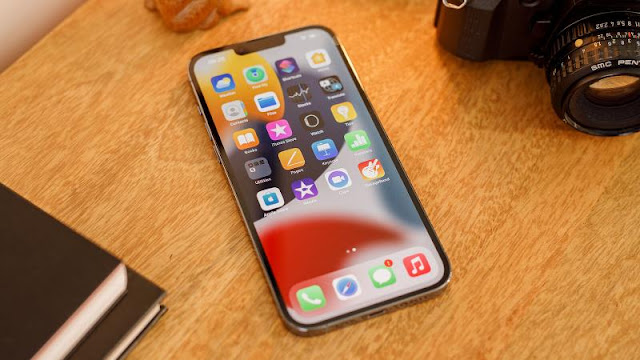












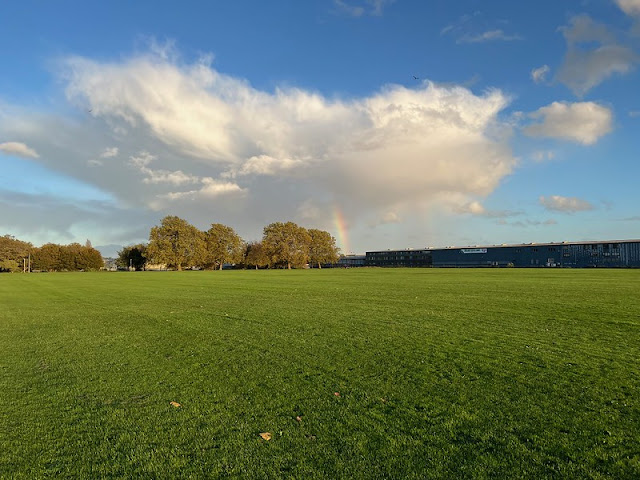

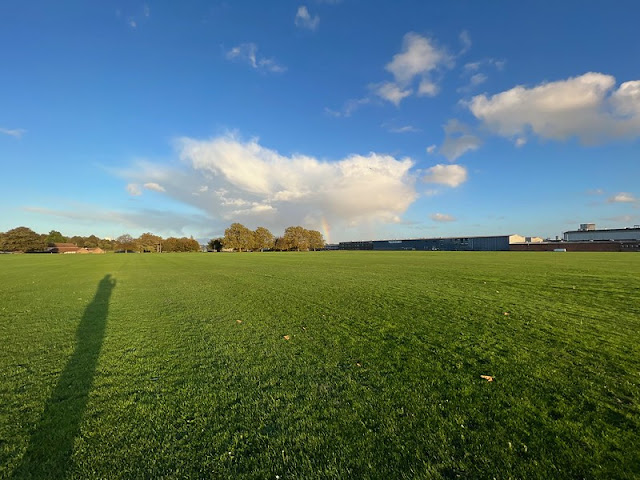


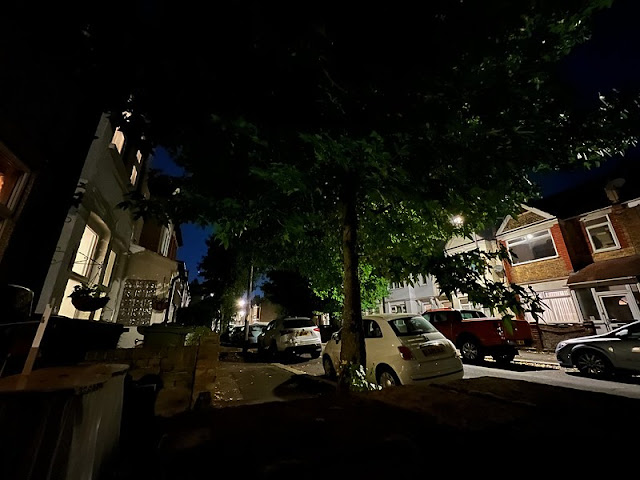



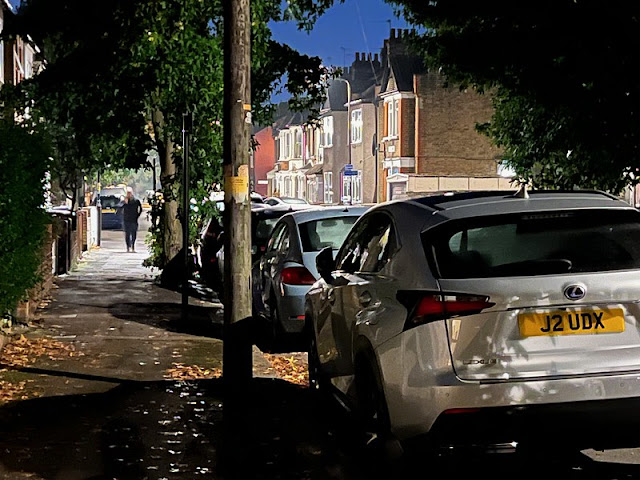





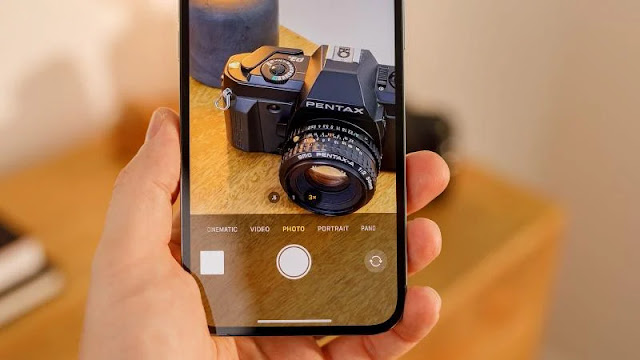

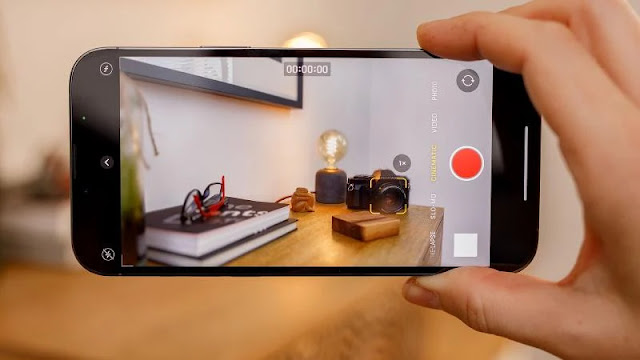


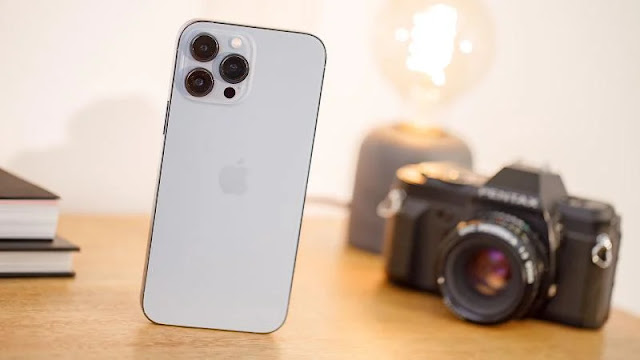
0 comments:
Post a Comment